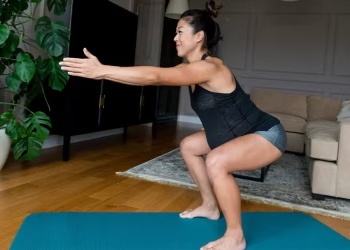In our constantly connected, fast-paced world, stress has become an unwelcome companion for millions of people. While we often seek complex solutions to manage our mounting tension, one of the most effective stress relievers has been with us since we took our first steps: walking. This simple, accessible activity offers profound benefits for both body and mind, serving as a powerful antidote to the pressures of modern life.
Walking for stress reduction isn’t just about moving your body from one place to another. It’s a therapeutic practice that engages multiple systems within you, creating a cascade of positive effects that quiet your mind, soothe your nervous system, and restore your sense of equilibrium. Understanding how and why walking works to reduce stress can help you harness its full potential and transform your daily walk into a sanctuary of peace.
The Science Behind Walking’s Stress-Busting Power
When you step outside for a walk, you’re activating a remarkable series of physiological responses that work together to combat stress. At the most fundamental level, walking triggers the release of endorphins, often called “feel-good” chemicals. These natural mood elevators interact with receptors in your brain to reduce your perception of pain and trigger positive feelings throughout your body. The effect is similar to that of mild euphoria, which is why many people describe feeling noticeably better after even a short walk.
Beyond endorphins, walking also influences your body’s production of stress hormones, particularly cortisol. When you’re under chronic stress, your cortisol levels remain elevated, contributing to a host of problems including anxiety, sleep disruption, and weakened immunity. Regular walking helps regulate cortisol production, bringing it back to healthier levels. The rhythmic nature of walking appears to signal to your body that you’re not in immediate danger, allowing your stress response system to stand down.
Walking also stimulates the production of serotonin and dopamine, neurotransmitters that play crucial roles in mood regulation and emotional wellbeing. Serotonin helps stabilize your mood and promotes feelings of happiness and contentment, while dopamine is associated with pleasure, motivation, and focus. When these neurochemicals are flowing properly, you’re better equipped to handle life’s challenges with resilience and composure.
The cardiovascular benefits of walking contribute significantly to stress reduction as well. As you walk, your heart rate increases moderately, improving circulation throughout your body. This enhanced blood flow delivers more oxygen to your brain, which can improve cognitive function and mental clarity. Better oxygenation also helps your muscles release accumulated tension, that physical manifestation of stress that often settles in your shoulders, neck, and back.
Perhaps most importantly, walking activates your parasympathetic nervous system, the branch of your autonomic nervous system responsible for the “rest and digest” response. This is the counterbalance to your sympathetic nervous system’s “fight or flight” response. When your parasympathetic system is engaged, your heart rate slows, your breathing deepens, your blood pressure decreases, and your digestive system functions more efficiently. All of these changes signal to your body and mind that it’s safe to relax.
The Mind-Body Connection in Walking
Walking offers unique psychological benefits that complement its physiological effects. The repetitive, rhythmic nature of walking creates a meditative quality that many people find deeply calming. As your feet strike the ground in a steady pattern, your mind can enter a state similar to that achieved through meditation or breathing exercises. This rhythmic movement can help interrupt the cycle of anxious thoughts and rumination that often accompanies stress.
Walking also provides what psychologists call “soft fascination,” a gentle engagement of your attention that allows your mind to wander in productive ways. Unlike the “hard fascination” demanded by screens and intense work tasks, which can deplete your mental resources, soft fascination during a walk allows your mind to process emotions, solve problems creatively, and achieve insights that might elude you when you’re trying to force solutions.
The change of scenery that comes with walking is therapeutic in itself. Stepping away from your stressful environment, whether it’s a busy office, a chaotic home, or simply the four walls you’ve been staring at all day, provides psychological distance from your problems. This physical separation often translates into mental perspective, allowing you to see challenges more clearly and respond to them more effectively.
Techniques to Maximize Stress Relief While Walking
While any walking is beneficial, you can enhance the stress-reducing effects through specific techniques and approaches. The first and perhaps most important technique is mindful walking. Rather than walking while lost in worried thoughts or distracted by your phone, try bringing full awareness to the experience of walking itself. Notice the sensation of your feet touching the ground, the swing of your arms, the rhythm of your breath, the air on your skin. When your mind wanders to stressful thoughts, which it inevitably will, simply acknowledge them and gently return your attention to the physical sensations of walking.
Coordinating your breathing with your steps amplifies walking’s calming effects. Try breathing in for four steps and out for four steps, or whatever rhythm feels comfortable and natural to you. This conscious breath work activates your vagus nerve, a key player in your parasympathetic nervous system, deepening the relaxation response. The combination of rhythmic breathing and movement is particularly powerful for releasing tension and quieting anxiety.
Walking in nature, whenever possible, multiplies the stress-reducing benefits significantly. Research has shown that spending time in natural environments lowers cortisol levels, reduces blood pressure, and improves mood more effectively than walking in urban settings. The Japanese practice of “forest bathing” or shinrin-yoku has demonstrated that immersion in nature can enhance immune function and significantly reduce stress markers. Even a park, tree-lined street, or waterfront can provide these benefits.
Vary your pace according to your needs. Sometimes a brisk walk is exactly what you need to discharge nervous energy and clear your head. The increased cardiovascular activity can help metabolize stress hormones and create a sense of accomplishment. At other times, a slower, more contemplative pace allows for deeper introspection and emotional processing. Listen to your body and let it guide you to the speed that feels right in the moment.
Consider incorporating sensory awareness into your walks. Make it a practice to notice five things you can see, four things you can hear, three things you can physically feel, two things you can smell, and one thing you can taste (perhaps the fresh air). This “5-4-3-2-1” technique grounds you in the present moment and interrupts stress-driven thought patterns, anchoring you in the immediate sensory experience of your walk.
Creating Your Stress-Busting Walking Practice
Establishing a regular walking practice for stress reduction requires intention but not perfection. Start by identifying times in your day when stress tends to peak or when you could most benefit from a break. Perhaps it’s mid-morning when work pressure builds, during your lunch hour, or in the early evening when you’re transitioning between work and home life. Scheduling your walks at these strategic times can prevent stress from accumulating throughout the day.
Begin modestly if you’re new to regular walking. Even ten or fifteen minutes can provide meaningful stress relief. As walking becomes a habit, you can gradually extend your time, aiming for 30 to 45 minutes most days of the week. Remember that consistency matters more than duration. A daily fifteen-minute walk will serve you better than an occasional hour-long trek.
Create walking routes that appeal to you and support your stress-reduction goals. Scout out paths that offer pleasant scenery, relative quiet, and safety. Having a variety of routes prevents boredom and gives you options for different moods and time constraints. Some days you might choose a longer loop through a park, while other days a quick walk around your neighborhood is what fits your schedule.
Remove barriers that might prevent you from walking. Keep comfortable walking shoes readily available. If weather is a concern, have appropriate gear on hand, whether that’s a rain jacket, warm layers, or sun protection. The easier you make it to just step out the door, the more likely you are to follow through, especially on days when stress makes everything feel harder.
Consider making your walking practice social when it serves you. Walking with a friend, partner, or pet can add enjoyment and accountability to your routine. Conversation during walks can provide additional stress relief through social connection and support. However, also honor your need for solitary walks when you want time alone with your thoughts or simply need quiet.
Technology can support your practice, but use it wisely. Fitness trackers can help you stay motivated, and apps that identify walking routes can introduce you to new paths. However, avoid letting your walk become another source of stress or productivity pressure. You don’t need to hit a certain step count or maintain a specific pace for your walk to be therapeutic. If tracking becomes stressful, let it go.
Integrating Walking into Your Stress Management Toolkit
Walking works best as part of a comprehensive approach to stress management. While it’s remarkably effective on its own, combining walking with other stress-reduction practices creates a powerful synergy. Consider pairing your walking routine with adequate sleep, healthy eating, and other physical activities you enjoy. Walking can actually enhance your capacity for these other healthy habits by reducing stress and improving mood.
Use walking as a transition ritual between different parts of your day. A morning walk can help you start the day with clarity and calm. A midday walk can reset your energy and focus. An evening walk can help you decompress and leave work stresses behind before entering your home. These transition walks create psychological boundaries that prevent stress from bleeding from one area of your life into another.
On particularly stressful days, don’t hesitate to take multiple shorter walks rather than one long one. Breaking up prolonged periods of sitting or intense mental work with brief walking breaks can prevent stress from building to overwhelming levels. Even five minutes of walking can shift your state and provide fresh perspective.
Walking Toward Wellness
The beauty of walking for stress reduction lies in its simplicity and accessibility. You don’t need special equipment, expensive memberships, or extensive training. You simply need to put one foot in front of the other and allow the natural healing properties of movement, breath, and rhythm to work their magic on your body and mind.
As you develop your walking practice, you’ll likely discover that the benefits extend far beyond stress reduction. You may find your sleep improving, your energy increasing, your mood stabilizing, and your overall sense of wellbeing deepening. Walking becomes not just a stress-management technique but a form of self-care, a daily investment in your physical and mental health.
Remember that walking for stress relief isn’t about achieving a destination or meeting performance goals. It’s about the journey itself, the moments of peace and presence you create with each step. In a world that constantly demands your attention and energy, your walking practice becomes a time that belongs only to you, a moving meditation that reconnects you with your body, calms your mind, and reminds you that sometimes the simplest solutions are the most profound.
Step outside. Begin walking. Feel the stress fall away with each step, replaced by the natural rhythm of a body and mind moving toward balance and peace.
- what is tai chi walking for stress reduction
- practical stress relief walking
- mental health through stress reduction
- mindful stress reduction practice
- meditation techniques for stress
- breathing for stress reduction
- mindfulness to reduce stress
- evening stress reduction walks
- grounding for stress relief
- slow walking for stress reduction






